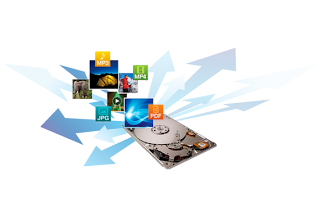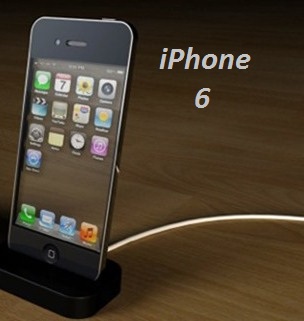Li-Fi
All of them heard about Wi-Fi a type of wireless technology. Similar to Wi-Fi, the next wireless technology called Li-Fi. Only difference is using of light instead of radio waves. Wi-Fi is best for general wireless coverage within buildings, and Li-Fi is ideal for high density wireless data coverage in confined areas and for relieving radio interference issues.
Fraunhofer Heinrich Hertz Institute (HHI) in Berlin said they reached a data transmission rate of to 3 Gbits/s using light emitting diodes.The technology works by adapting LEDs to send digital information. A light sensor on a device picks up the digital information sent by the LED, which enables it to be processed by a computer. The concept of Visual Light Communication(VLC) is also called as Li-Fi. LEDs are solid-state electronics, meaning they can be controlled in the same way as any other electronic component, and switched at a high speed using techniques called Pulse Width Modulation(PWM). In this technology LEDs as a transmitter and photo diode as a receiver instead of antenna used in Wi-Fi.
 |
| Data broadcast via Li-Fi |
The previous VLC system was capable of transmitting up to 500 Mbps over four meters (13 feet), or 120 Mbps over 20 meters (67 feet). Rather than actually using a standard LED bulb, Fraunhofer’s VLC system is a black box, with an LED and photo detector on the front, and an Ethernet jack on the back to connect it to the rest of the network. In this system, the hardware only allowed for 30 MHz of bandwidth to be used. In order to reach the high speed of Gbits/s, the HHI researchers have found a way that instead of using single LED, they uses three different colours.
FEATURES:
Optical
wireless communication in the infrared and visible range, is an attractive
solution, especially in environment settings where radio communication
encounters difficulties. The Fraunhofer Heinrich Hertz Institute applies
modern transmission techniques that enable data rates up to 1,25 Gbit/s.
LED-lamps, normally used for lighting purposes, simultaneously transmit data,
even when mobile terminals are not aligned with the access point.
Li-Fi is spectrally efficient modulation for high data throughput, Support of multi-user
communication, optimization of optical senders and receivers for high
bandwidth, high linearity and high signal-to-noise ratios, simple optical
frontends, off-the-shelf components and standard interfaces, Robust
communication without transceiver alignment, i.e. no pointing and tracking.
VLC results achieved using on-off keying
- 125 Mbit/s (low-cost components)
- 230 Mbit/s (APD photodiode)
VLC results achieved using DMT modulation
- 100 Mbit/s (low-cost hardware implementation)
- 500 Mbit/s (demonstrated with APD + off-line data processing)
- 800 Mbit/s WDM transmission using RGB-LED (demonstrated via off-line data processing)
VLC Components for 3 Gbit/s communication:
 |
| Transmitter(left) and Receiver(right) |
The newly developed patent protected components have now enabled exploitation of a much higher bandwidth of up to 180 MHz and achieved a transmission rate in laboratory experiments of over 1 Gbit/s per single light frequency. As off-the-shelf white light LEDs mainly use three light frequencies or light colors (RGB), speeds of up to 3 Gbits/s are feasible. VLC has a broad array of other possible applications ranging from areas like hospital operating theatres where safety is at a premium to places like trade shows and factory halls where radio communication is problematic.
 |
| In Aircraft |
Applications of Li-Fi
- Combination of lighting and data communication
- Technology also applicable to near infrared or ultraviolet wavelengths
- Simple shielding by opaque surfaces (improved privacy)
- Wireless links in RF-noisy environments
- No electromagnetic interference (EMI) with radio systems, no e-smog
- Unregulated spectrum (optical frequencies) with worldwide availability
- Simple shielding by opaque surfaces (improved privacy)



























